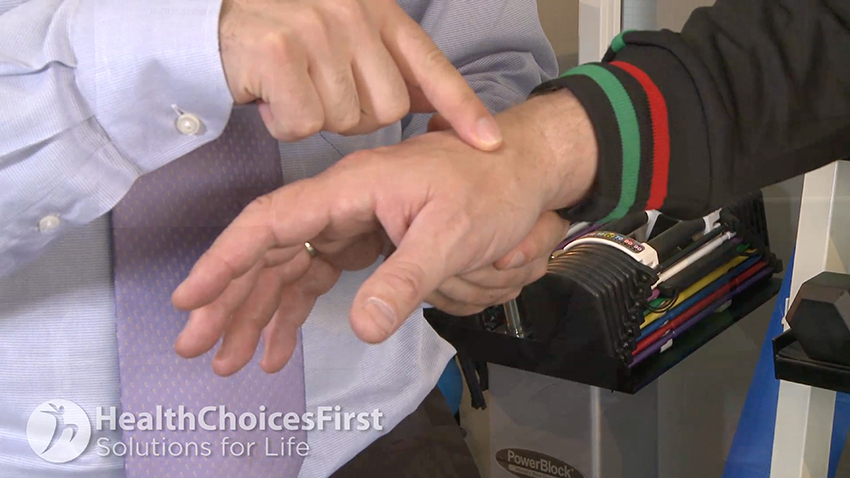Chronic Disease Education
Acute Condition Education
Working with your Family Physician
Working with Allied Care Providers
Carpal Tunnel Syndrome quiz

Knowledge is Power.
True/False - Quiz: Do You Understand Carpal Tunnel Syndrome?
Information - Carpal Tunnel Syndrome

Carpal tunnel release/ Trigger finger release: Surgical Notes
Following the procedure, a dressing will have been applied. Post operative pain management includes 1000mg of Tylenol or 400 mg of Ibuprofen every 6 hours. These medications can be taken together and it is strongly recommended that you combine the maximum dose of both medications at the same time during the first 24 hours. Move your fingers aggressively so as to create a full closed fist followed be a full open hand. Hand swelling can increase for 2-3 days after the procedure. Do not remove or wet the dressing for 48 hours after the surgery. The dressing can be removed after 48 hours. You may then gently wash the wound with soap and water. Sutures will dissolve internally over several weeks. Do not soak the wound for 2 weeks. A light application of antibiotic ointment (like Polysporin) is recommended. After 2 weeks, begin deeply rubbing the surgical site as hard as you can to help soften the usual hardness that increases around the surgical site for 6 weeks. This will ultimately resolve, but it might take many months.
General Information on Carpul Tunnel Syndrome
Carpal tunnel syndrome is compression of the median nerve in the wrist. The median nerve gives feeling to the thumb, the index finger, the long finger, and half of the ring finger. The carpal tunnel is covered by a ligament called a transverse retinacular ligament. When there is swelling in this area, it puts pressure onto the retinaculum, leading to carpal tunnel syndrome.
Carpal Tunnel Syndrome Symptoms
Most patients experience numbness at nighttime or in the morning, as the tendons swell overnight. After they wake up and move their fingers, the fluid moves out of the tendons and the numbness usually goes away. However, as carpal tunnel syndrome symptoms worsen, patients experience numbness and pain in the daytime whenever the wrist is bent or extended. Pain is felt in the palm of the hand and the forearm, with occasional radiation up to the shoulder.
People whose jobs involve heavy gripping or vibrating tools often develop carpal tunnel syndrome. Other risk factors include hypothyroidism and inflammation of the tendons from rheumatoid arthritis. Many pregnant women develop carpal tunnel syndrome as a consequence of the swelling that they have through pregnancy. In most cases, people develop carpal tunnel syndrome simply from being born with a small carpal canal. It can affect one or both hands, and pain can be continuous or intermittent.
Carpal Tunnel Syndrome Treatment
 The typical treatment for carpal tunnel syndrome includes splinting during the night. These are hard splints that help to immobilize the wrist and decrease the pressure that is being applied to the wrist.
The typical treatment for carpal tunnel syndrome includes splinting during the night. These are hard splints that help to immobilize the wrist and decrease the pressure that is being applied to the wrist.
You should avoid positions of extreme wrist extension or flexion at work or during activities. Other carpal tunnel syndrome treatment methods include anti-inflammatories, cortisone injections into your carpal canal and physiotherapy. If the condition progresses and becomes more severe, you may need surgery. Most patients who undergo surgery for carpal tunnel syndrome have complete resolution of their symptoms.
Talk to your healthcare provider if you'd like more information on carpal tunnel syndrome.
Visit HealthChoicesFirst.com for more videos and resources on orthopedics.
Print this Action Plan and check off items that you want to discuss with your healthcare provider
-
Most patients experience numbness at nighttime or in the morning, as the tendons swell overnight. After they wake up and move their fingers, the fluid moves out of the tendons and the numbness usually goes away.
-
As carpal tunnel syndrome symptoms worsen, patients experience numbness and pain in the daytime whenever the wrist is bent or extended. Pain is felt in the palm of the hand and the forearm, with occasional radiation up to the shoulder.
-
People whose jobs involve heavy gripping or vibrating tools often develop carpal tunnel syndrome. Other risk factors include hypothyroidism and inflammation of the tendons from rheumatoid arthritis. Many pregnant women develop carpal tunnel syndrome as a consequence of the swelling that they have through pregnancy.
-
The typical treatment for carpal tunnel syndrome includes splinting during the night. These are hard splints that help to immobilize the wrist and decrease the pressure that is being applied to the wrist.
-
Other carpal tunnel syndrome treatment methods include anti-inflammatories, cortisone injections into your carpal canal and physiotherapy. If the condition progresses and becomes more severe, you may need surgery.
